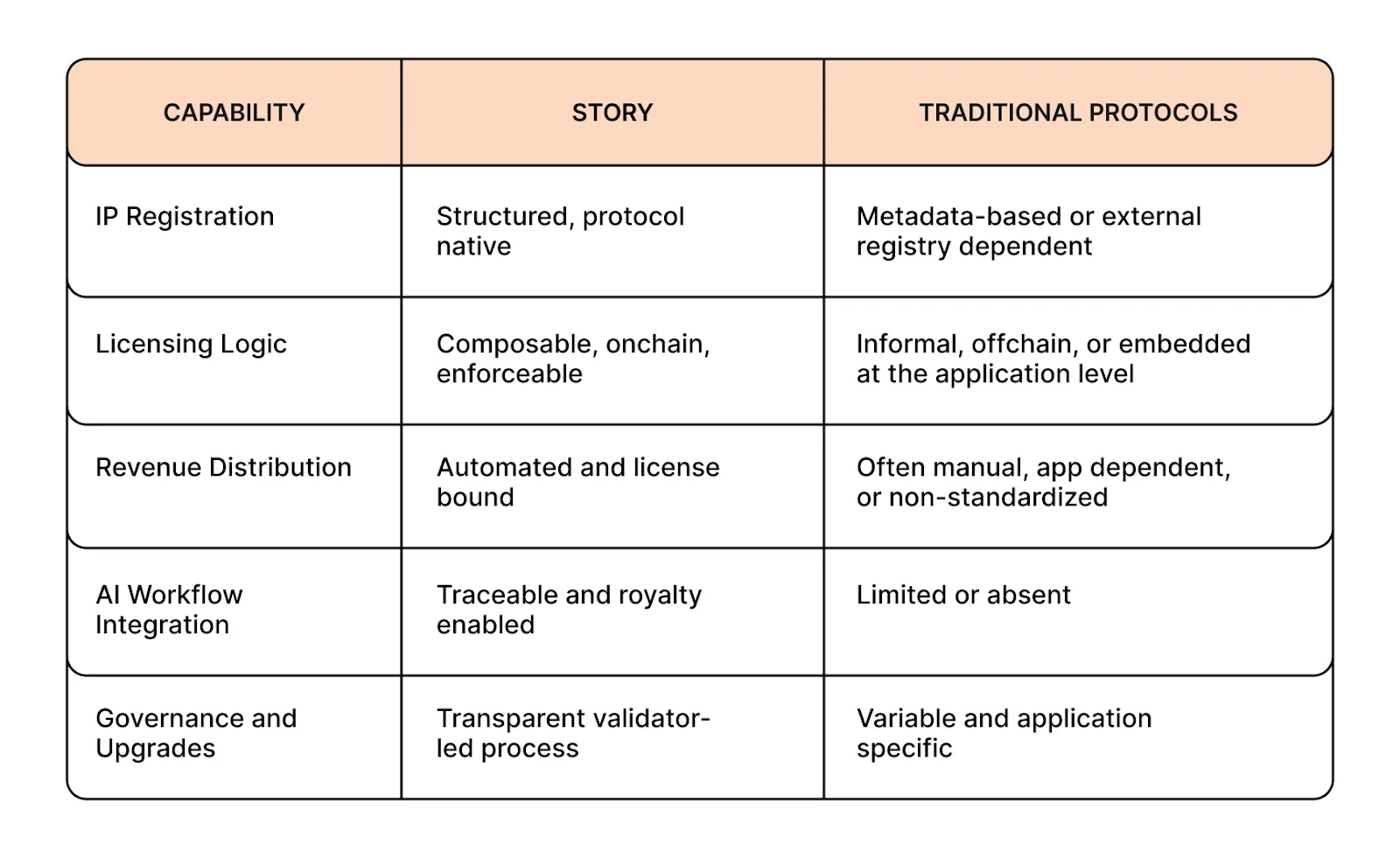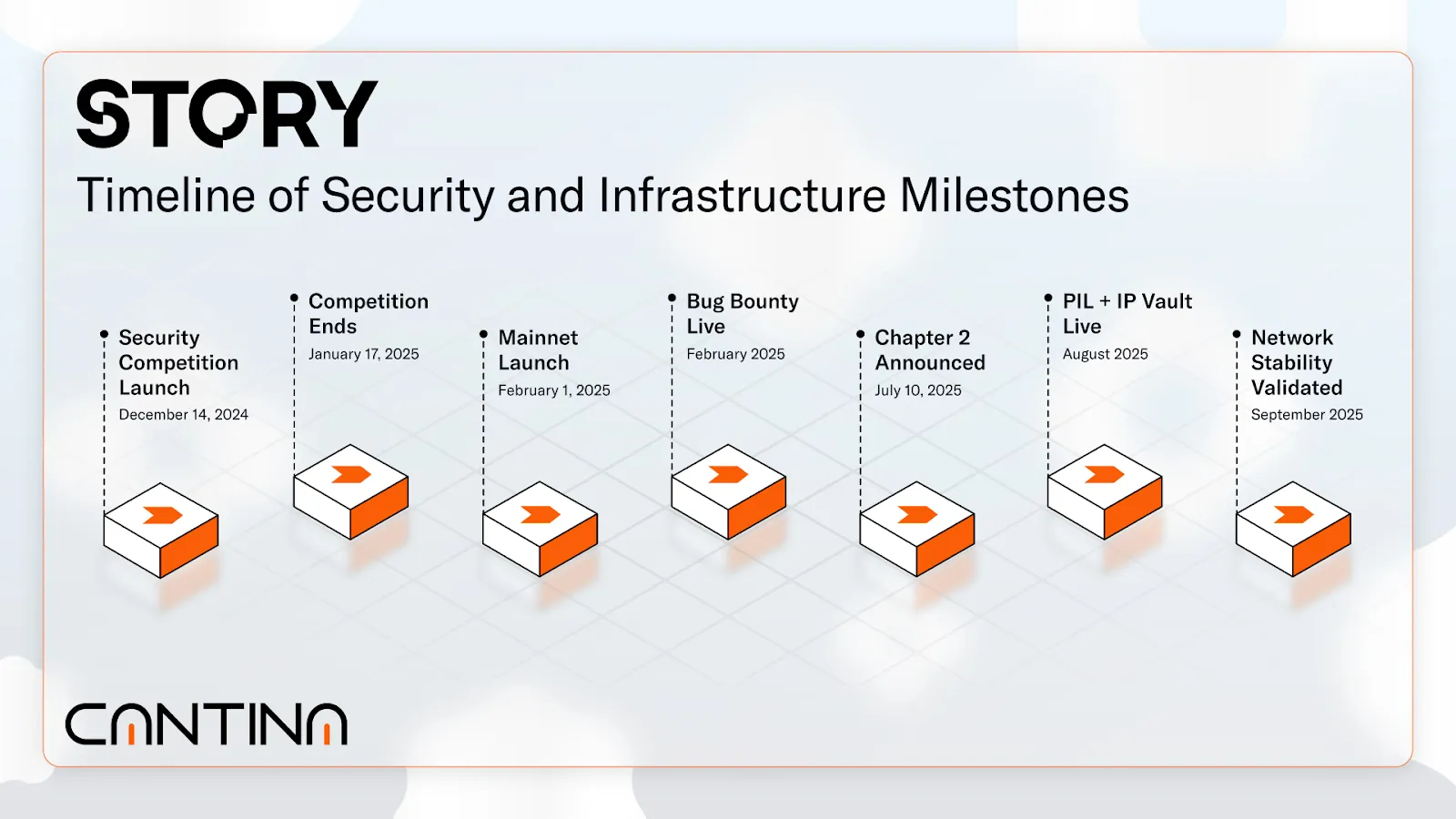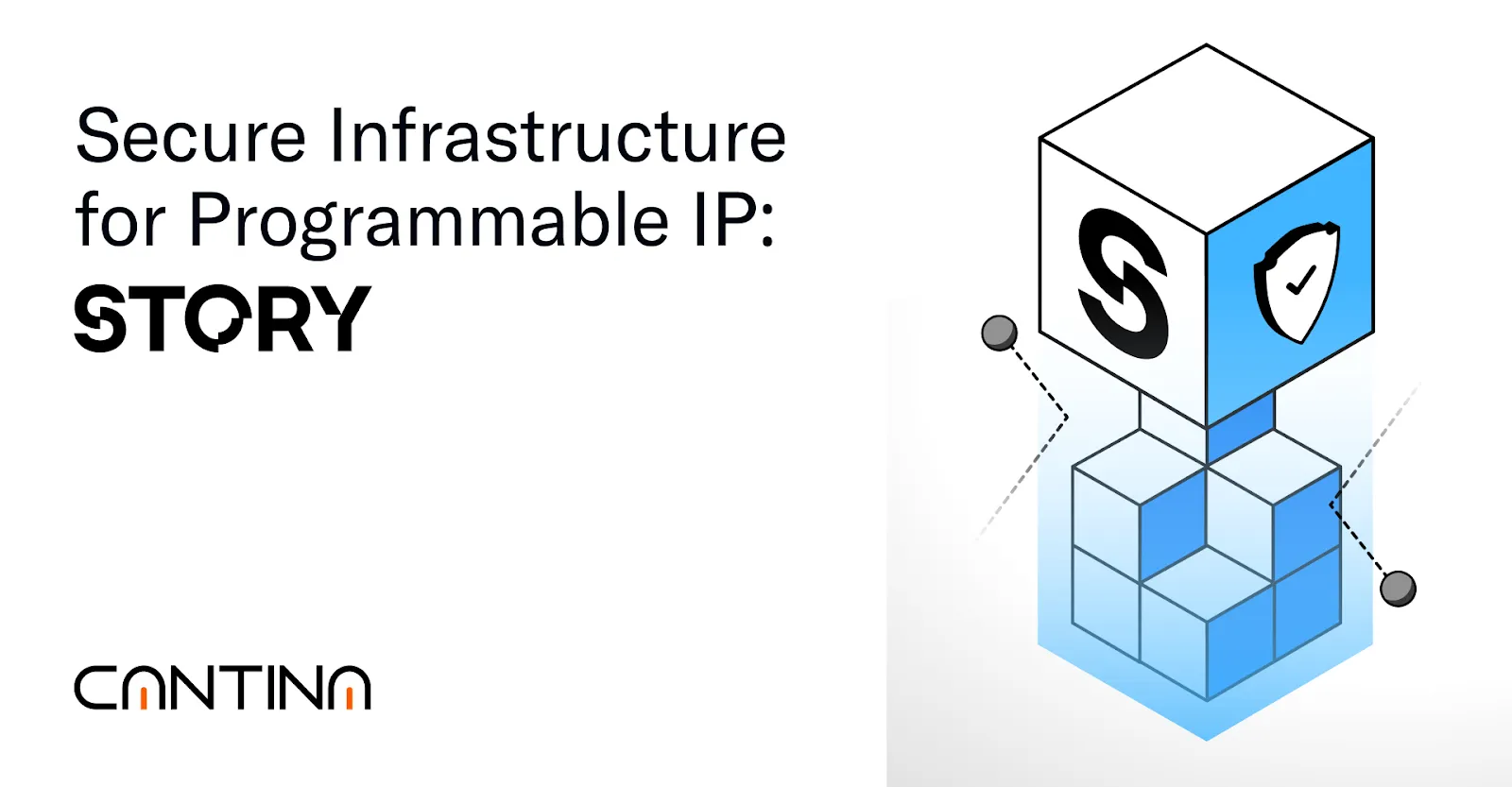Story is redefining how intellectual property is registered, licensed, and monetized. Its infrastructure supports both traditional media IP and rights-cleared datasets used in real-world AI development. Two key functional pillars define Story’s architecture:
- IP Registration: Creators and organizations can register intellectual property directly onchain, enabling verified attribution, lifecycle tracking, and enforceable licensing rules at the protocol level.
- IP Tokenization: Story enables owners of existing IP to tokenize revenue rights and usage permissions. This opens access to yield opportunities that were previously unavailable, such as earning royalties from songs, films, or data assets - by transforming static rights into programmable financial instruments.
Chapter 2 brings to life the systems that enable these capabilities to operate in production environments. It activates programmable licensing logic, confidential access controls, and native monetization flows that execute onchain with validator-enforced outcomes. These include:
- IP Vaults that manage confidential data access with decryption permissions linked to license terms and executed in trusted environments
- Programmable IP Licensing (PIL) for representing licensing rules, attribution rights, and derivative permissions as composable protocol logic
- Validator coordination and expansion to support enforcement, permission validation, and secure computation
- Execution environment extensions through Story Geth and the IPGraph precompile, allowing stateful tracking of IP assets, contributors, and licensing history
Chapter 2 showcases a product-ready deployment of these infrastructure components. They now support organizations working with IP across sectors including synthetic media, agent coordination, music, genomics, and collaborative data environments.
Why Story Represents a New Class of Protocol
Story does not simply register digital assets. Its infrastructure encodes licensing logic, contributor relationships, and usage enforcement directly into the protocol layer.
This model enables:
- Attribution-aware AI data workflows
- Access control bound to validated licenses
- Revenue distribution across contributors based on license terms
- Rules enforcement for derivatives, remixes, and multi-party usage coordination
These capabilities function natively across content types and asset classes, from datasets to music to research contributions.
Featured Ecosystem Applications
Story’s expanding ecosystem demonstrates how programmable IP is already being used in production. Through Aria Protocol, IP rights from globally recognized artists such as Justin Bieber, BTS, and Blackpink have been tokenized, enabling onchain yield distribution from music royalties. This marks one of the first large-scale deployments of tokenized IP revenue rights.
Beyond tokenization, Aria has recently introduced its first programmable IP asset, enabling holders to remix original works under onchain licensing rules while preserving attribution and revenue flow (announcement). These examples showcase how Story’s infrastructure extends beyond registration to enable dynamic monetization, composable licensing, and new forms of creative collaboration.
Story vs Traditional Protocols

The Legal and Technical Foundation of PIL
The Programmable IP License is a framework authored by Story and based on U.S. copyright law. It maps licensing parameters such as commercial use, attribution requirements, and license fees into an onchain struct that is enforced by the protocol. This creates a connection between programmable smart contract behavior and enforceable legal terms.
By bridging code and law, the PIL enables IP on Story to operate autonomously while maintaining compatibility with traditional legal systems. It turns Story into programmable rights infrastructure, not just an asset registry.
Technical Infrastructure That Enables PIL
Story Geth integrates custom precompiles optimized for traversing IP graphs. These data structures capture licensing dependencies, contribution chains, and attribution logic. Precompiles support fast, low-cost computation of coordination logic across interlinked IP assets.
The network’s consensus layer is built on CometBFT, supporting low latency finality and deterministic execution. Validator coordination and state integrity ensure that license resolution, access enforcement, and revenue routing function as part of the base protocol.
Modules including Licensing, Royalty, and Dispute enable on-chain coordination for permissioned usage, distribution of royalties, and resolution of IP claims.
Cantina’s Security Work with Story

Cantina has worked closely with Story on structured, protocol-level security initiatives focused on validator execution, licensing coordination, and attribution logic.
This work has included the following.
Security Competition
Cantina supported the design and execution of a public security competition scoped to Story’s core architecture. The review covered:
- The Cosmos-based consensus layer
- The Story Geth execution client with extended EVM compatibility
- The IPGraph precompile responsible for attribution, contributor tracking, and license logic
- The Proof of Creativity protocol used for IP registration and structured metadata coordination
This effort provided validation of Story’s execution model, surfaced patterns in usage coordination, and contributed to the reliability of contributor-level state and license enforcement.
Bug Bounty Program
Cantina also partnered with Story to design and launch a $1,000.000 bug bounty program. The program continues to support contributors in reviewing:
- Validator execution behavior
- IPGraph state logic and license resolution
- Protocol coordination for attribution and revenue routing
- Application-level contract behavior for registration and composability
These structured programs reflect Story’s commitment to protocol assurance and implementation readiness. Cantina is proud to support that approach.
Why This Matters for AI and IP Ecosystems
Applications in AI, genomics, media, and collaborative research require licensing outcomes that are observable, enforceable, and composable. Attribution, data coordination, and usage verification must function without reliance on centralized intermediaries or offchain permissions.
Story addresses this through protocol-native components. This includes validator-enforced decryption rules, on-chain license resolution, and programmable attribution routing. These features now operate in production through systems brought to life in Chapter 2.
Cantina’s security reviews supported Story’s goal to align protocol behavior with the needs of organizations managing sensitive data, long-tail contributors, and dynamic coordination logic.
Where This Is Heading: What We See From the Field
The infrastructure Story is building reflects a demand we see across the organizations we work with. Applications that rely on IP, particularly in AI, research, and media systems, are moving from static asset registration toward enforceable coordination.
Across sectors, there is growing interest in the ability to:
- License datasets and media assets with usage logic encoded at the protocol level
- Enforce access conditions without intermediaries or external approvals
- Distribute royalties across contributors with onchain mechanisms
- Compose rights into programmable logic that scales with complexity
Story is among the first networks putting this model into production. From our perspective, the organizations using these systems represent a shift in how IP and coordination will function across ecosystems.
We expect continued growth in this category, led by use cases that depend on composability, enforceability, and machine-readable coordination. Story is positioned as foundational infrastructure for this direction.
The Next Phase of Programmable IP
Story has entered a phase where licensing, attribution, and access enforcement operate as native protocol features. These systems are supporting production use cases across AI, synthetic media, and collaborative data ecosystems.
Cantina’s role focused on validating the systems behind these outcomes. Through program design, implementation review, and infrastructure-level coordination, we helped ensure Story’s architecture is ready to support programmable IP at scale.
We see this as a model for how protocol organizations can build enforceable coordination systems with technical precision and operational clarity.
To scope your next successful security engagement, contact us.




